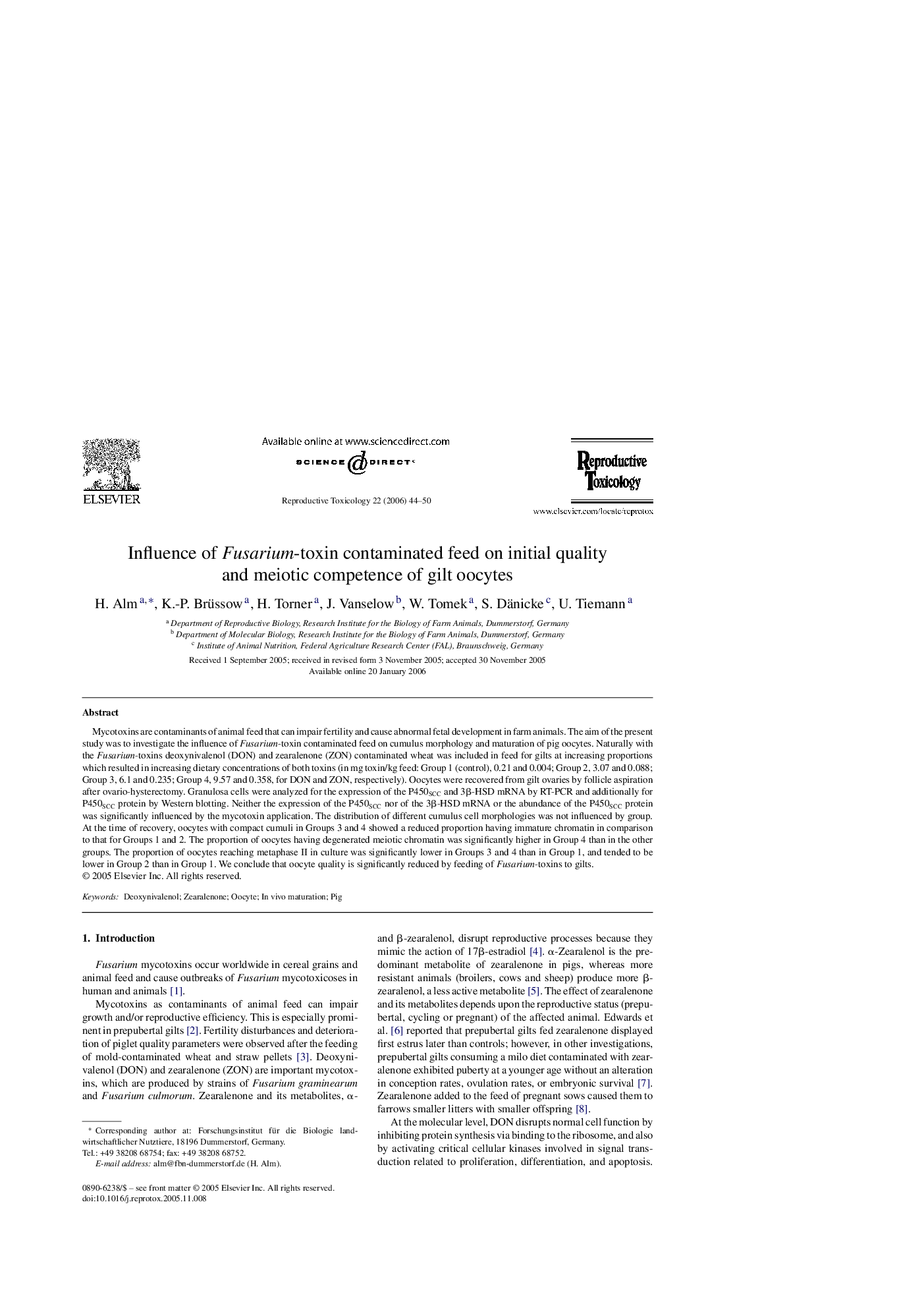| Article ID | Journal | Published Year | Pages | File Type |
|---|---|---|---|---|
| 2595356 | Reproductive Toxicology | 2006 | 7 Pages |
Mycotoxins are contaminants of animal feed that can impair fertility and cause abnormal fetal development in farm animals. The aim of the present study was to investigate the influence of Fusarium-toxin contaminated feed on cumulus morphology and maturation of pig oocytes. Naturally with the Fusarium-toxins deoxynivalenol (DON) and zearalenone (ZON) contaminated wheat was included in feed for gilts at increasing proportions which resulted in increasing dietary concentrations of both toxins (in mg toxin/kg feed: Group 1 (control), 0.21 and 0.004; Group 2, 3.07 and 0.088; Group 3, 6.1 and 0.235; Group 4, 9.57 and 0.358, for DON and ZON, respectively). Oocytes were recovered from gilt ovaries by follicle aspiration after ovario-hysterectomy. Granulosa cells were analyzed for the expression of the P450SCC and 3β-HSD mRNA by RT-PCR and additionally for P450SCC protein by Western blotting. Neither the expression of the P450SCC nor of the 3β-HSD mRNA or the abundance of the P450SCC protein was significantly influenced by the mycotoxin application. The distribution of different cumulus cell morphologies was not influenced by group. At the time of recovery, oocytes with compact cumuli in Groups 3 and 4 showed a reduced proportion having immature chromatin in comparison to that for Groups 1 and 2. The proportion of oocytes having degenerated meiotic chromatin was significantly higher in Group 4 than in the other groups. The proportion of oocytes reaching metaphase II in culture was significantly lower in Groups 3 and 4 than in Group 1, and tended to be lower in Group 2 than in Group 1. We conclude that oocyte quality is significantly reduced by feeding of Fusarium-toxins to gilts.
